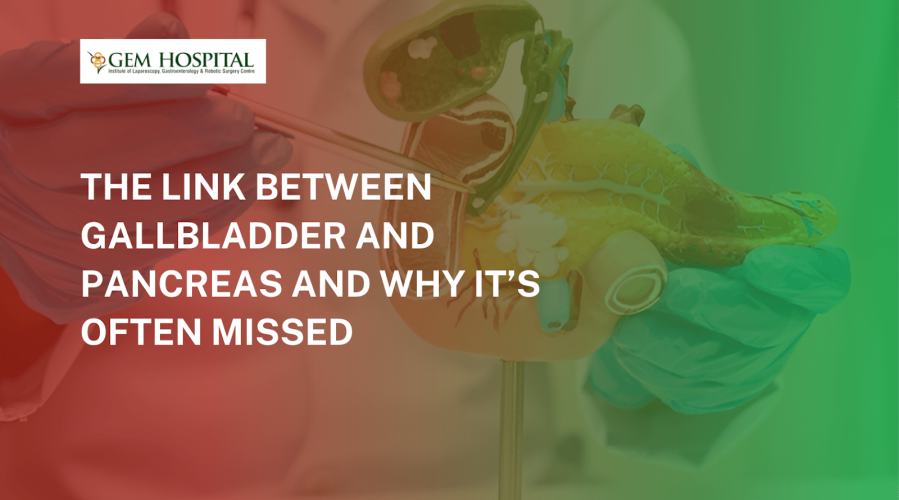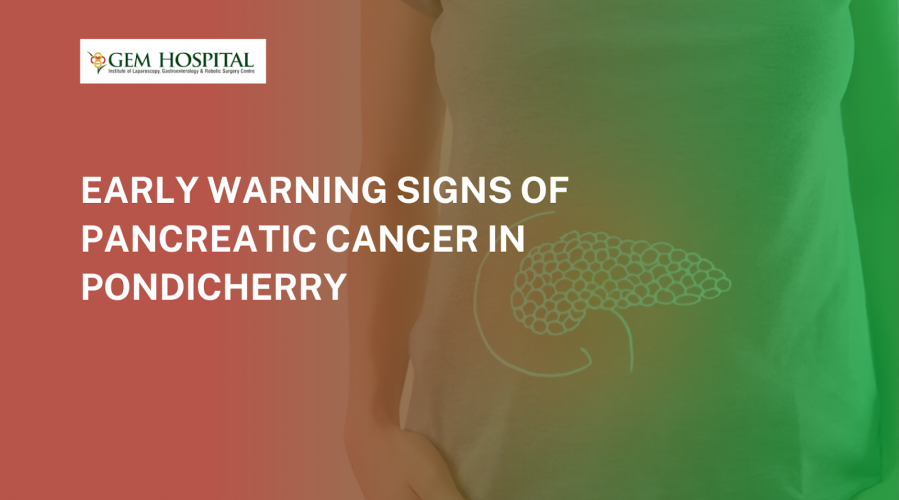Discover the early warning signs of pancreatic cancer in Pondicherry and learn when to seek medical attention for timely diagnosis and treatment.
The Link Between Gallbladder and Pancreas And Why It’s Often Missed

Although the gallbladder and pancreas don’t get much credit when it comes to digestive health, they are working behind the scenes of our digestion and are performing important functions. Most people don’t realize the important role these two organs play together until something is wrong. The gallbladder pancreas connection is not only geographically close to each other but also in terms of function. When this function is disrupted damage can happen, and can leave to serious health problems. Unfortunately, the gallbladder-pancreas axis is often overlooked for early diagnoses, resulting in complex treatment regimens that were avoided by missed possibilities with a gallbladder and pancreas inter-relational diagnosis.
So, let’s take a look at how these organs are inter-connected, the signs to look for, why it’s important to understand how they work together, and how it relates to your health.
What Are the Functions of the Gallbladder and Pancreas?
Gallbladder:
- Acts as a storage tank for bile produced by the liver.
- Releases bile into the small intestine to aid in fat digestion.
Pancreas:
- Produces digestive enzymes that help break down carbohydrates, proteins, and fats.
- Secretes insulin and glucagon to regulate blood sugar levels.
Both organs are part of the biliary system and work in sync to support smooth digestion. A disruption in one can directly impact the function of the other.
Understanding the Gallbladder Pancreas Connection
The Gallbladder and Pancreas are connected via the shared duct system namely, the common bile duct and the pancreatic duct, which converge and empty into the duodenum (the first section of the small intestine). Because of this anatomical overlap, a blockage in the bile duct can affect the pancreas, and vice-versa.
Why is this connection important?
- A gallstone lodged in the common bile duct can lead to pancreatitis (inflammation of the pancreas).
- Chronic gallbladder disease may eventually trigger pancreatic stress.
- Issues like biliary sludge or infection can cause a domino effect on pancreatic function.
Why the Connection Is Often Missed
One of the main reasons the Gallbladder Pancreas Connection is often missed is because their symptoms frequently overlap and mimic each other:
- Abdominal pain (especially upper right or center)
- Nausea or vomiting
- Bloating and indigestion
- Jaundice (yellowing of the skin and eyes)
- Fever or chills
In busy emergency rooms or even routine checkups, these symptoms might initially be attributed to general gastritis, acid reflux, or even stress. Unless imaging tests like an ultrasound, CT scan, or MRCP (Magnetic Resonance Cholangiopancreatography) are conducted, the connection remains hidden.
Common Health Conditions That Involve Both Organs
Several medical conditions highlight the importance of recognizing this relationship:
1. Gallstone Pancreatitis
When a gallstone travels from the gallbladder and blocks the pancreatic duct, it causes severe inflammation. This condition requires urgent medical attention and often surgical intervention.
2. Chronic Cholecystitis with Pancreatic Involvement
Long-term gallbladder inflammation can gradually affect pancreatic secretions, leading to slow digestive complications.
3. Biliary Dyskinesia
A motility disorder that affects how bile is released, which can indirectly influence the pancreatic enzyme flow.
4. Choledocholithiasis
Stones in the common bile duct may impact both bile and pancreatic enzyme flow.
When to See a Doctor
If you experience persistent or recurring abdominal pain especially after eating fatty foods don’t ignore it. It could be a subtle sign of gallbladder or pancreatic dysfunction.
Warning Signs:
- Sharp, shooting pain radiating to the back
- Pain triggered after meals
- Sudden nausea or vomiting
- Unexplained weight loss
- Clay-colored stools or dark urine
Getting a clear diagnosis early on can prevent complications like acute pancreatitis, gallbladder rupture, or even digestive enzyme deficiency.
Diagnostic Tests That Reveal the Connection
Modern imaging and lab tools help specialists identify problems in the gallbladder and pancreas quickly:
- Abdominal Ultrasound – First-line tool to detect gallstones or inflammation.
- MRCP or ERCP – Advanced imaging to trace bile and pancreatic duct blockages.
- Liver and Pancreatic Enzyme Tests – Measure levels of ALT, AST, amylase, and lipase.
- CT Abdomen – Detects pancreatic swelling, necrosis, or pseudocysts.
These tests are essential in evaluating the Gallbladder Pancreas Connection, especially in recurrent or unexplained digestive issues.
Book Your Appointment at GEM Hospital
If you are experiencing any of the symptoms described or have a history of gallstones or pancreatitis etc., don't put it off. At GEM Hospital, our expert gastroenterologists and HPB (Hepato-Pancreato-Biliary) surgeons have extensive experience diagnosing and treating complex digestive disorders including Gallbladder pancreas connection disorders.
You deserve the right diagnosis and treatment the first time.
Take the first step to recovery for lasting digestive wellness.
We encourage you to book your appointment today.
Blogs & Article
Learn how early treatment of hernia can prevent serious complications and improve recovery outcomes for patients in Pondicherry.
Discover top hernia clinics in Coimbatore offering advanced surgical techniques for safe, effective, and minimally invasive hernia treatment.


